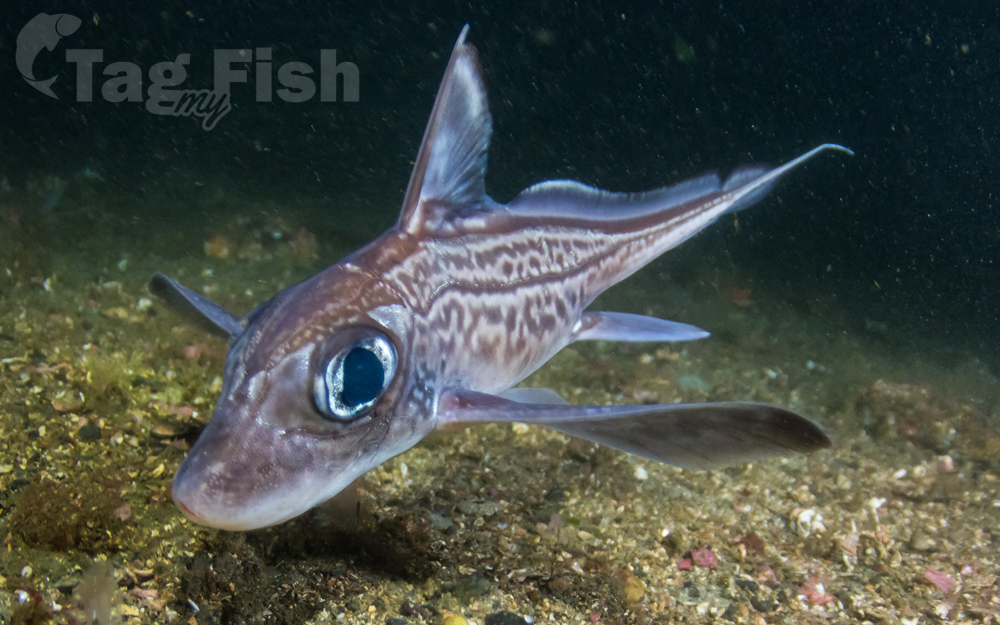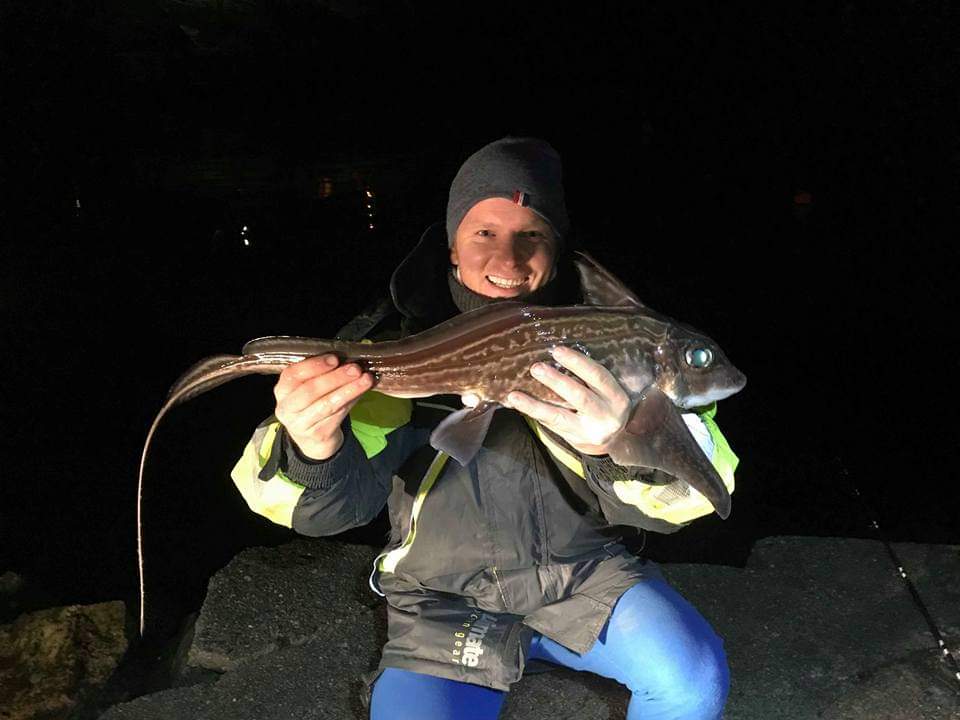Rabbit fish
(Chimaera monstrosa)

Classification
General data
Chimaera monstrosa, also known as the rabbit fish or rat fish, is a northeast Atlantic and Mediterranean species of cartilaginous fish in the family Chimaeridae. The rabbit fish is known for its characteristically large head and small, tapering body. With large eyes, nostrils, and tooth plates, the head gives them a rabbit-like appearance, hence the nickname Rabbit fish. They can grow to 1.5 metres (5 ft) and live for up to 30 years.
The appearance of C. monstrosa shares characteristics of its close relatives, sharks. It characteristically has a large head and a tapering body that ends in its whip-like tail, and has a short snout with an overhanging mouth. The top dorsal fin is positioned high on the spine of the fish, and is triangular and tall in height. Positioned in the mid-section of the fish, the spine runs throughout the length of the fish and continuously joins with the upper part of the caudal fin; this dorsal spine is also mildly poisonous and can cause painful stings. One distinguishing feature of the fish, compared to its close relatives, is the anal fin, which is distinctly separated from lancet-shaped caudal fin. The color is silver-green with spots of brown. Additionally, they have marmor-white stripes in all directions with a distinct lateral line can be seen clearly on the head.
The rabbit fish can grow up to 1.5 m (5 ft) long, and weigh 2.5 kg (5.5 lb). More specifically, this chimaera species is characterized by a slow-growth rate, and a long life expectancy. In the study of one population, the theoretical asymptotic length of this fish was estimated at 78.87 cm with a yearly growth rate of 6.73% per year. With these estimates of growth, the study also suggests the maximum ages of the fish to be 30 years for males and 26 for females, with the maturity age of the sample being 13.4 years for males and 11.2 years for females.
Distribution and habitat
The geographic habitat of the fish has been registered around the Mediterranean Sea and the Eastern parts of the Atlantic Ocean. This geographic range starts northwards Morocco and extends to the northern areas of Norway and Iceland in the Northern North Sea.
Within these geological areas, the depth range of C. monstrosa is 50 to 1,000 metres (160 to 3,280 ft), but it is most abundant in upper to middle continental slope habitats at depths of 300 to 500 metres (980 to 1,640 ft). Within these parameters, the water temperatures of the species habitats are most commonly in the range 4.7–8.0 °C (40.5–46.4 °F). There have been reports of summer inshore migration of C. monstrosa to lay eggs in depths as low as 100 m (330 ft).












